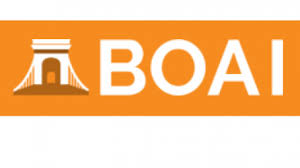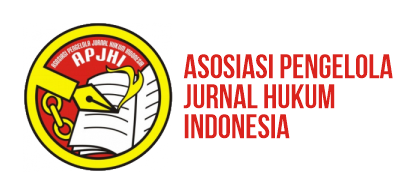Author Guidelines
Guidelines for Writing Articles for Kertha Patrika Journal
Journal Writing Guidelines
The Kertha Patrika Journal (KP) is a scientific law journal published by the Faculty of Law, Udayana University, Bali. It is imperative to note that articles which do not align with the Author Guidelines stipulated by Kertha Patrika Journal will be summarily rejected. All articles submitted by authors and published in this journal initially undergo a double-blind peer review process.
The purpose of this journal is to provide a platform for the publication of critical thinking based on original research, including conceptual ideas and review articles from academics, researchers, and practitioners that have not been published in other media.
The scope and focus of articles published in this journal encompasses the following subjects:
- Constitutional Law;
- Administrative Law;
- Criminal Law;
- Civil Law;
- International Law;
- Procedural Law;
- Customary Law;
- Business Law;
- Tourism Law;
- Environmental Law;
- Law and Society;
- Information Technology and Electronic Transactions Law;
- Human Rights Law; and
- Contemporary Law.
Review Policy
All articles submitted to the Kertha Patrika Journal (KP) undergo a review process by the Board of Editors and a team of reviewers, both internal and external, who understand and have competence related to the substance of the article submitted by the author. After the review process, the Editor will inform the author regarding the acceptance, rejection, or revision of the article for publication.
Open Access Journal Policy, Copyright, and Publication Ethics


The Kertha Patrika Journal's publication policy is founded on the principle of open access, categorising the journal as an open access journal. The primary objective of this policy is to disseminate research findings and conceptual ideas in a manner that is freely accessible to the general public. This initiative is undertaken with the aim of promoting the advancement and exchange of scientific knowledge, with a particular focus on the field of law on a global scale.
The work is subject to the International Creative Commons Attribution-ShareAlike 4.0 License.

KP is committed to adhering to the guidelines established by the Committee on Publication Ethics (COPE) in addressing all aspects of publication ethics, with a particular emphasis on cases of research and publication misconduct. This statement delineates the ethical behaviour expected of all parties involved in the publication process of articles in this journal, including authors, editors-in-chief, editors, reviewers, and publishers of KP. This journal is committed to following best practices in addressing ethical issues, errors, and article retractions. It is the primary responsibility of the editorial board to prevent publication misconduct. It is imperative to note that any form of unethical behaviour is considered unacceptable, and this journal does not condone any form of plagiarism.
Article Format
It is imperative that articles submitted for publication consist of a minimum of 3,500 words and a maximum of 10,000 words, inclusive of footnotes, abstracts, and bibliographies/references. The font employed in the writing guidelines for the Kertha Patrika Journal is Book Antiqua, with a single-spaced, 11-point font size.
The following structure is to be adhered to in the submission of articles to this journal: The following components are to be included: title, abstract (in English and Indonesian), keywords, introduction, writing method, results and discussion, conclusion, and references.
Title
- The title of the article should be relevant to the substance of the writing, interesting, and a maximum of 16 words in length. It should be written in Book Antiqua font (16 pt).
For instance:
- Government Authority in Closing Websites with Negative Content
The author may be a single individual or multiple individuals. The following details are to be provided by the author: name of author's institution/organisation, email address, and designation of author as corresponding. The author's name is written without academic titles. In the event of multiple authors, their names are listed in succession, separated by commas (,). It is imperative to note that author names are not abbreviated. In instances where an author's name comprises a single word, it is written in two words, with the name repeated, in the online version (HTML) for the purpose of metadata indexing.
For instance:
- In the event of the author's name being Marwanto, the name is to be written as follows: Marwanto Marwanto.
Abstract
- The abstract is written in two languages, namely English and Indonesian. The abstract title is written in bold, while the abstract content is written in Book Antiqua, 10 pt, italic, single-spaced, with a maximum of 250 words. It is imperative that the abstract comprises the following: the purpose of the writing/research, the methods of writing/research, and the results of the writing/research.
- Keywords are expressed in the form of either single words or phrases. The employment of phrases is to be preferred. Keywords consist of 3-5 words or 3-5 phrases.
The following example illustrates the use of keywords and phrases:
Consumer protection; Government Authority; Legal Policy
Main Heading of Manuscripts
Each section heading (main heading) in this journal, along with its subheadings, is written in numbered format.
|
1. Main Heading 2. Main Heading 2.1. Sub-heading 2.1.1. Sub-sub headings |
Introduction
The Introduction section contains an adequate background to the problem, the problem being studied, the purpose of the writing, and the state of the art of previous research and publications, as proof that the article submitted is original and makes a new contribution to important scientific knowledge that is worthy of publication.
The Introduction also includes an explanation of the gap analysis and/or the urgency of the study. Therefore, a statement of novelty from the study is required, supported by a literature review of previous research. State-of-the-art sources are recommended from primary sources, namely relevant journal references and current publications, both international and national journals, theses, and dissertations.
The following example illustrates the numbering format employed in the Research Methods section:
1. Introduction
Research Methodology
For articles based on research findings, the research method is written as a separate chapter following the Introduction. The research method includes the type of research, research approach, legal sources or data sources, techniques for collecting legal materials, data collection techniques, as well as methods for analysing legal materials or data. For conceptual articles, only the research approach needs to be discussed, which is placed at the end of the Introduction chapter.
The following example illustrates the numbering format employed in the Research Methods section:
2. Research Methodology
Results and Discussions
The Results and Discussion section is where the results or findings of the research (scientific findings) are presented, followed by a scientific discussion. The discussion in the Results and Discussion chapter is descriptive, analytical, and critical. It is imperative that the discussion is aligned with the sequence of legal issues that are the primary focus of the study. In order to ensure the rigour of the study, it is essential that the theories included in the theoretical framework are cited in this chapter. The state-of-the-art referenced in the Introduction section is also examined and elaborated upon in the Results and Discussion section.
The analysis presented in the Results and Discussion section can be supported by tables presented horizontally. The presentation of tables is accompanied by a 'Table Title' and 'Table Source.' Each table is accompanied by the author's analysis and commentary, which forms part of the broader assessment of the table in question. In addition to tables, the provisions of laws or other regulations presented are accompanied by the author's analysis and opinions to strengthen and sharpen the analysis of the article submitted for publication.
The following example illustrates the numbering format to be employed in the Results and Discussion section:
3.Results and Discussions
- Government Authority in Closing Websites with Negative Content
- …………
- …………
- Et cetera.
Tables and Picture
Figures
The figure should be in good quality and grayscale, and if it is made in color, it should be readable when it is later printed in grayscale. Caption should be numbered with Book Antiqua, 11 pt, Center, and single-spaced, which is also equipped with source. A caption should comprise a brief title (not on the figure itself) and a description of the illustration.
For example:


Figure 1. Figure Caption
Source: institution, year
Table
Table presentation is equipped with a “Table Title” and “Table Source.” Number tables consecutively following their appearance in the text. Each table is followed by the author's study and comments as part of the analysis of the table presented.
For example:
Table 1. Table Caption
|
Issue |
Rules |
Application |
|
|
|
|
|
|
|
|
Source: institution, year
Conclusion
The conclusion section is pivotal as it encapsulates the summary of the study and provides responses to the inquiries posed in the article. Consequently, the conclusion must be formulated in accordance with the sequence of the issues addressed and be pertinent to the research objectives. It is imperative that the conclusion section does not contain any new discussions or comments from the author. Should the author proffer any recommendations, these may be included in the conclusion.
The following example illustrates the numbering format to be employed in the conclusion section.
4. Conclusion
Acknowledgements
It is imperative to express profound gratitude to all individuals and entities that have contributed to the research, with particular emphasis on those who provided financial support, including those who assisted in the refinement of the article. It is imperative to acknowledge the contributions of advisors, funding institutions, proofreaders, and other parties who have played a significant role in this endeavour.
Footnotes
The Kertha Patrika Journal uses footnotes to cite sources quoted by authors. Footnotes use Chicago Manual of Style 17th edition (full note), with Ibid.
Bibliography / References
The bibliography, an integral component of research articles, meticulously enumerates all references utilised in the study. It is imperative that references utilised in written work are sourced from publications or works that have been published within the last decade (10 years). It is strongly recommended that the composition of the reference list/bibliography be optimised to ensure maximum utilisation of primary sources (80%), encompassing national journals, international journals, theses, dissertations, conference proceedings (both national and international), regulations, international instruments, and court rulings. It is estimated that 20% of sources may comprise books or other reference materials. It is imperative that each submitted article utilises a minimum of 10 references, with a particular emphasis on primary sources. References employed solely as citations should be incorporated into the bibliography, which is to be arranged alphabetically by author.
The Kertha Patrika Journal employs the Chicago Manual of Style 17th edition (full note), with Ibid.
The following requirements must be met in order to facilitate the creation of both tables and figures
The submission of tables and figures is permitted for articles submitted to the Kertha Patrika Journal, should the author deem it necessary to reinforce the analysis. In order to ensure clarity and integrity in academic discourse, tables and figures incorporated within articles must be systematically numbered and titled. Table titles are positioned above the respective tables, while figure titles are placed below the corresponding figures. The creation of tables should be undertaken with the utilisation of horizontal lines as opposed to vertical lines.
The following checklist details the author guidelines:
|
No |
Author Guidelines |
|
|
|
||
|
1. |
The title should be no more than 16 words long and should be written in a font of 16 pt Book Antiqua. The title should be centred. (English article) |
|
|
2. |
The following section will present an abstract of the objectives, methods and results of the study. The abstract will also include the most significant keywords that were identified during the research. The text should comprise between three and five words or phrases. The maximum text should be 250 words in length and typed in Book Antiqua font (10 pt). It should also be italicised and separated by a single space. |
|
|
3. |
The following section will provide an introduction that will include the background, the problem, the objectives, and the state of the art. It will serve as the basis for the originality of the writing. Font: The font style is to be Book Antiqua, 11 pt, with single-spaced text. |
|
|
4. |
The main heading of manuscripts employs numbering: Title: Abstract: 1. This text constitutes an introduction. 2. The following essay will provide a comprehensive overview of the most prevalent research methods. 3. The ensuing discourse will present and discuss the findings of the study (Results and Discussions). 3.1… 3.2… 3.3… et cetera 4. The conclusion drawn from the preceding arguments is as follows: 5. Acknowledgements References |
|
|
5. |
The present text adheres to Chicago Manual of Style 17th edition (full note), with Ibid style guidelines for citations and references, as outlined in the sixth edition of the APA manual (American Psychological Association) |
|
|
6. |
The font used for the entire text is Book Antiqua 11 pt, with the exception of the Title (16 pt) and Abstract (10 pt), which are set in a different font. |
|
|
7. |
It is imperative to maximise the utilisation of primary citation sources, encompassing journals, proceedings, theses, dissertations, legislation, international instruments, and court rulings, with the objective of attaining an ideal maximum of 80%. The ratio of book/literature sources to journal sources is approximately 20 % to 80%. (English article) |
|
|
8. |
In instances where tabular data is necessary, it is imperative that the presentation of said data is in a horizontal orientation. |
|
|
9. |
The article should range in length from approximately 3,500 to 10,000 words. (English article) |
|
|
|
|










